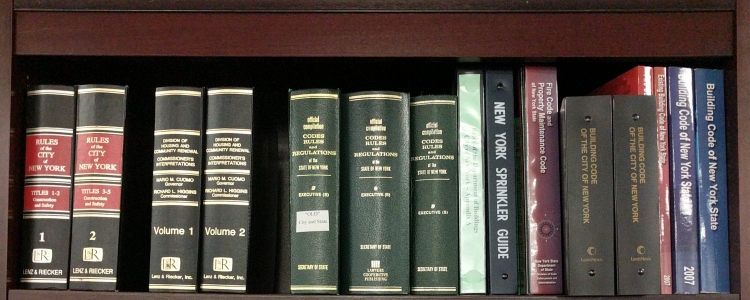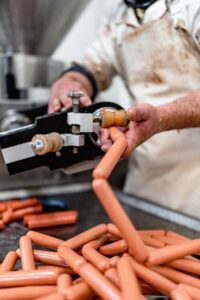Understanding the Code Development Process


The code development process is a lot like a hot dog: people don’t like to think about how it’s made.
Hot Dogs and the Doggone Code Development Process
There is a saying that if you love hot dogs, you should never watch them being made. You may never want to eat a hot dog again. Hot dogs are a summertime food staple found in ballparks and on many barbecue grills in neighborhoods throughout the country. Watching how hot dogs are made from the manufacturing process to the finished product that ends up on our grill, can be an unpleasant process. A comparison can be drawn from the unpleasant nature of how hot dogs are made, to how fire and building codes are developed.
There is certainly some truth that sitting through code development meetings can sometimes be a painstakingly tedious and lengthy process. Committee members meticulously analyze every word in a proposal to determine the submitter’s intent and the impact the proposed change will have on the built environment. It’s common for the meaning of one word to be scrutinized and debated for hours. For those who compare the code development process to watching hot dogs being made, know that NFSA (National Fire Sprinkler Association) actively works on behalf of the fire sprinkler industry at the ICC (International Codes Council) and NFPA (National Fire Protection Association) code hearings to ensure the industry is well represented. NFSA staff is composed of professionals from around the country that specialize in and are passionate about improving codes and standards. The goal is to make sure the codes that are in use around the United States are practical, understandable, and most importantly, emphasize fire sprinklers and fire protection in general throughout the built environment.
Current NFSA Proposals for ICC and NFPA

Below is a summary of some of the proposals being brought forward by NFSA at the ICC and NFPA code hearings:
- Correlate language throughout the International Codes when referencing “automatic sprinkler systems”. Previously, the International Codes would refer to automatic sprinkler systems using different terminology (“fire sprinklers”, “automatic fire sprinkler system”, “automatic sprinkler system”, etc.).
- IFC Section 903.2.11.4 requires ducts conveying hazardous exhaust (as defined by the International Mechanical Code) to be protected with automatic sprinklers. The exception lists ducts where the largest cross-sectional “diameter” of the duct is less than 10 inches. NFSA submitted a proposal to change this exception to include square and rectangular ducts, not just round ducts.
- Correlate new sections in both the IFC/IBC and NFPA 1 for fire department connection mounting height. The proposal brings existing language over from NFPA 13 and NFPA 14 into NFPA 1 and the IFC.
- Clarifying the bathroom sprinkler exception in the IFC/IBC. This exception allows sprinklers to be omitted from bathrooms in Group R occupancies that do not exceed 55 square feet in area that are located within individual dwelling units or sleeping units provided the “walls and ceilings” are noncombustible or limited combustible. Some have interpreted “walls and ceilings” to mean the actual construction (walls, studs, etc.) must be noncombustible or limited combustible. But the intent behind this requirement is for the exterior surfaces or wall coverings, not the studs.
- Add language to Section 905 of the IFC/IBC allowing pressure regulating devices on Class I or Class III standpipe hose valves with a static pressure not exceeding 175 psi to be replaced with standard hose valves when approved by the fire code official.
- Correlate smoke and heat vent requirements between the IFC and NFPA 1.
- Finally, NFSA is also proposing a new requirement in Section 901 of the IFC to require sprinklers that have been installed for 80 years or more to be replaced with new listed fire sprinklers appropriate for the occupancy classification. This includes storage occupancies and buildings utilizing high-piled combustible storage.
Further Reading
The Code Development Process | ICC
The NFSA Advocates for the Fire Sprinkler Industry in the Code Development Process
In conclusion, I have never seen hot dogs being made, but I have heard enough from other people that I think I will stick to enjoying the finished product. You may never be involved in the code development process, but you can rest assured knowing that NFSA is working diligently to ensure the finished product (the code) benefits you, your profession, and the fire sprinkler industry. NFSA staff work diligently to ensure the codes and standards adopted and used throughout the country reflect the interests of the fire sprinkler industry and fire and life safety in general. So, just like your summer barbecue, the finished product can be something to relish (pun intended) and take pride in.
More about the author
John Swanson currently serves as NFSA’s Codes and Standards Specialist. In this role he provides training and education and represents NFSA on code and standards technical committees. He currently serves as a Principal member of the NFPA 72 – National Fire Alarm and Signaling Code Technical Committee and is a member of the International Building Code (IBC) Fire Safety Committee and past member of the International Fire Code (IFC) Interpretation Committee. From 2013-2017, John served as a fire service representative appointed by Minnesota Governor, Mark Dayton to the Minnesota Board of Architecture and Engineering.
